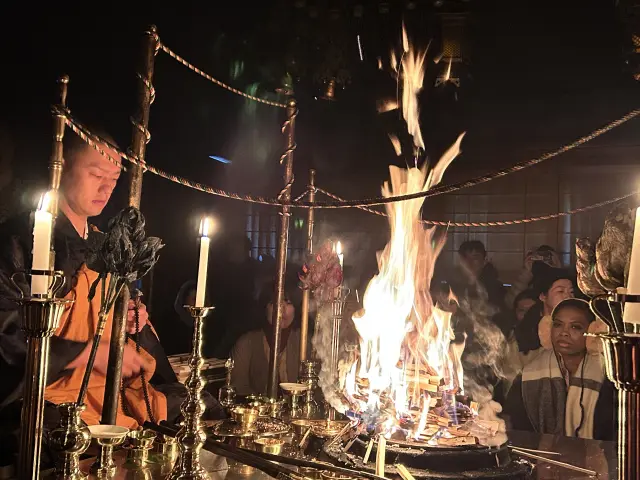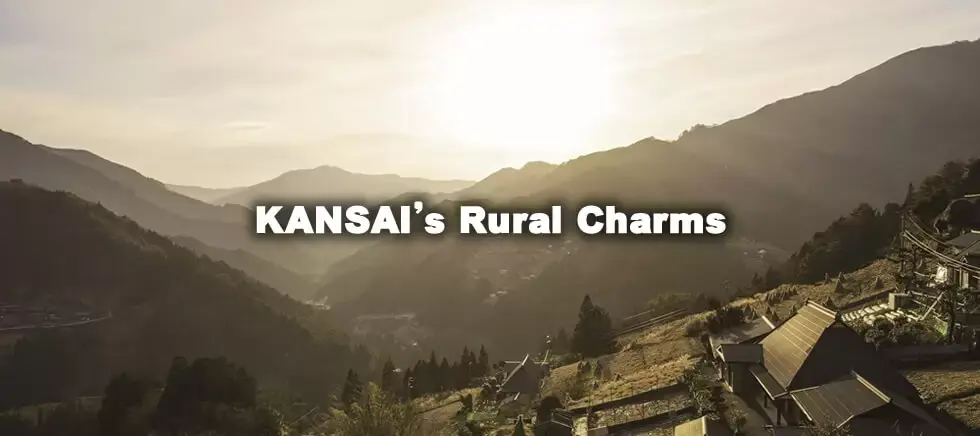
KANSAI’s Rural Charms
Last update
The Kansai region is home to some of Japan’s biggest and most historical cities, places like the sprawling metropolis of Osaka City, the ancient capital, Kyoto, and quaint Kobe City to name but a few.
Kansai also lays claim to some of the most traditional rural areas and countryside regions with natural rustic beauty and charm of their own. Areas in which the Old Japan can still be found, hidden away from the bustling traffic and neon lights of the cities. A Japan, little seen by others, just waiting for you to explore.
Satoyama, Traditional Scenes of Agricultural and Forestry
One of the quintessential scenes unique to Japan are those of the Satoyama. Sato means village, and yama means hill or mountain. Rather than being simply residential mountain villages as the name suggests, satoyama are defined as environments between the foothills and the arable flat farming land, where for centuries, people have lived and practiced a form of agricultural and forestry management that has become part of the ecosystem, and what is now, at last, being recognized as a true sustainable lifestyle.
Satoyama was an art that had fallen into disrepair due to changes in natural resource requirements, such as from charcoal and firewood to oil, and from compost to chemical fertilizers. Changes in the aging population and rural depopulation simply hastened the demise of these traditional environments. Recently, public awareness and preservation of these unique and important habitats has begun, and specialized tours are now available, complete with knowledgeable and passionate guides, willing to share these ancient farming techniques and wisdom.
Scenes of Satoyama will surely stir your soul. (try reading that out loud three times!) Scenes of rich green rice fields spread out under the view of the majestic mountains. Copses of bamboo, and specially tended trees and grassed areas surrounding old farmhouses where life is simple for the locals who till the soils. These are the places where Japan’s distinct seasons make a natural spectacle, the cherry blossoms of spring, the wild flowers and ever ripening rice stalks of summer, and the rich colors of autumn for the visitor and local alike.
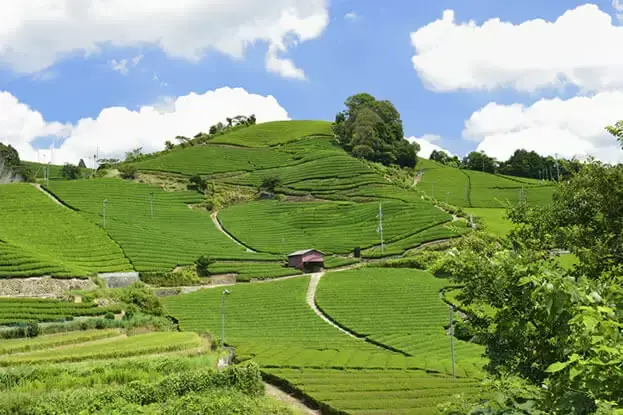
Satoyama
Seeing Satoyama
One of the best places to see traditional satoyama scenery is in Miyama, Kyoto, where a village of traditional gassho-style thatched roof A-frame homes remain. The village is a Japanophile and a photographer’s dream and has been selected as a national preservation area for important traditional buildings. Of the 50 preserved houses, 39 still have thatched roofs. The village’s Miyama Folk Museum is the right place to start to understand the history and culture of this farming region. There are a few guest houses, and traditional homes now offering the opportunity to taste rural farm life. Miyama Village’s ancient Kamakura Shrine is recommended for its magnificent view over the town. Each season presents another view of these well-preserved slices of old Japan.
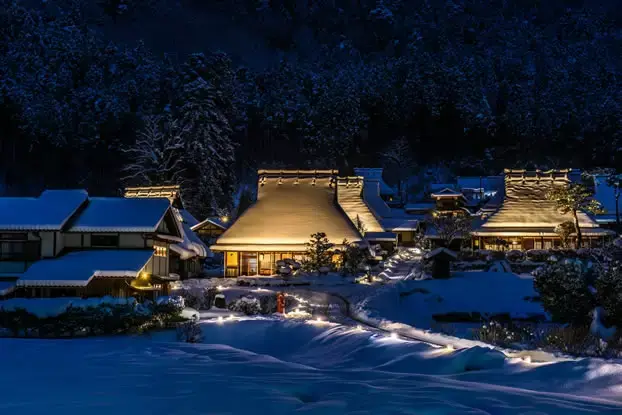
Miyama
Nara Prefecture’s Asuka Village was originally the home of Japan’s first Emperor, and the site of Japan’s first Buddhist temple. The quaint villages’ Tachibana-dera Temple was founded in 606 on the birth site of Prince Shotoku, an early supporter of Buddhism in Japan. Inside the feudal Edo period (1603-1868) rebuilt temple complex is an ancient stone about 1m high with two faces carved into it, believed to represent the two sides to humanity, good and evil. Who made it, when and why remains a mystery.
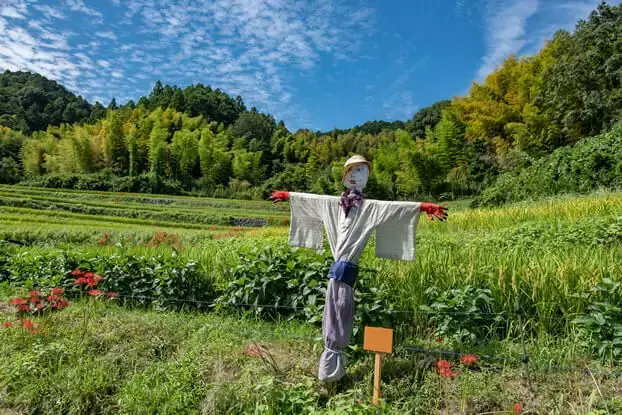
Asuka
Asuka’s former school is now preserved as a traditional guesthouse overlooking the peaceful rice fields and within walking distance of the Asuka Museum. Historical shrines and temples, ancient tumulus, huge mysterious megaliths, and even hot springs dot the area, along with a strawberry farm, grape farm and the picturesque Inabuchi Tanada terraced rice fields, all easily accessible by rental bicycle. This is the sort of place you could escape to easily for a few days, or even weeks of pure, unadulterated blissful peace and quiet, and discover the true essence of Old Japan.
Farm stays where you can enjoy experiencing the traditional farming lifestyle while overnighting in an ancient home and tasting local fare are now available in Kameoka, Kyoto, Ayabe, Fukuchiyama, Tottori Prefecture’s Chizucho, Miyoshi City and Kamikatsu-cho in Tokushima Prefecture, and many other areas across the Kansai countryside. This unique Japanese-style accommodation experience will leave you with a better understanding of Japan’s deep and varied culture, and a longing to return for more.
Rustic Fishing Villages and Remote Islands
The Kansai region borders the Pacific Ocean, Osaka Bay and the Seto Inland Sea to the south, and the Sea of Japan to the north. Naturally, the sea has long been a vital supply line for trade and transportation, and even more importantly as a source of food. Same too with the many rivers and mighty Lake Biwa. For that reason, the Kansai region is peppered with rustic, romantic fishing villages. Some of the rarer sites include:
Yoshihara, the Seaside Kyoto
Yoshihara, to the far north of Kyoto in Maizuru City, is a small fishing town you probably won’t find online. Or in the tourist books, or in brochures. In fact, finding people who have heard of it, let alone having been there is a rarity. Yet, to the few Japanese that know it, Yoshihara also goes by two other names. The “Kyoto by the Sea”, and “The Venice of Japan”. This alone gives you an idea of what to expect. The Edo period (1603-1868) atmosphere prevails in this sea-side fishing town separated by rivers and canals. Traditional homes, with water facing garage-like boathouses below, line these canals. Rent a bike to see the sights of the well-preserved architecture and then take a traditional boat trip along the canals for a different view of the town that time forgot. Stay at the 130-year-old Saika-an, an old traditional home now operating as an inn. Naturally, the fine seafood in Yoshihara is straight from the sea and served in the simple yet dignified way of the locals.
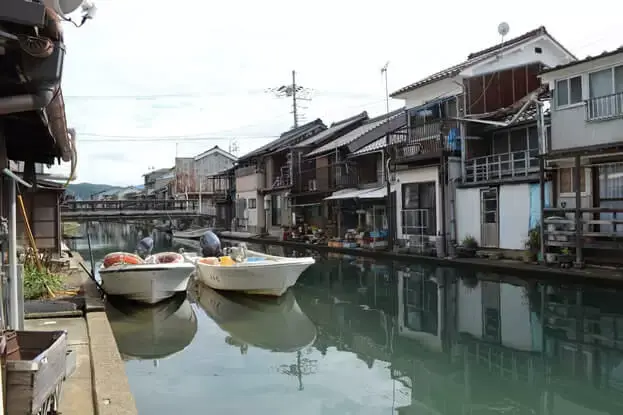
Yoshihara
Awaji Island
Located between the main islands of Honshu and Shikoku, Awaji Island is the largest island in the Kansai region, and it is a mystical island, long considered the birthplace of Japan. According to Shinto mythology, Awaji was the first of the Japanese islands to be created by the god, Izanagi. When Izanagi created Awaji Island, he was probably thinking of using it as a future resort island for himself. The island’s nature is stunning, featuring picturesque plains, cliffs, beaches and forest. Being surrounded by the Seto Inland Sea, you can also see the world's largestwhirlpools in the Naruto Strait, which runs from Awaji Island to Shikoku. Here the tidal flows cause the greatNaruto Whirlpools, visible from boat tours, or even from the greatAkashi Kaikyo Bridge spanning the straits. Ishida on the island’s west coast maintains one of the few remaining ancient terraced rice fields from which the evening sunsets are a beautiful sight. The Intangible Cultural Heritage listedAwaji Ningyo-joruri, a 500-year-old traditional form of puppet theatre is also based on Awaji, and can be seen daily in Minamiawaji. The realistic movements of the puppets, the stories they tell and the culture behind this entertainment will leave you spellbound.
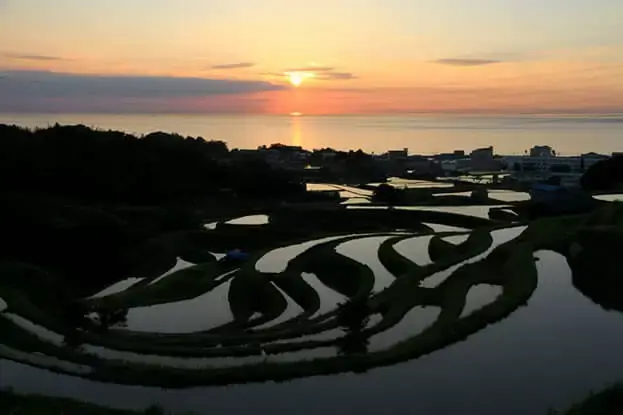
Awaji Island
The Islands of Toba
The names Kamishima, Toshijima, Sugashima and Sakatejima are difficult to say, hard to remember at first, but easy to access, and having visited there, become unforgettable. These four remote, yet inhabited islands just off the coast of Toba City, Mie Prefecture, are all part of the Ise-Shima National Park in the spiritual, historical and cultural heart of Japan. Naturally, each island has its own unique feel, scenery and charms. Access to Toba is easy via Kintetsu rail or road from Osaka, and from there regular ferryboats service the islands, the closest 10 minutes, the furthest 40 minutes by boat.
Experience the sunrises, the sunsets, the stars at night and the calm and picturesque Ise Bay from these four islands, the tranquility of life there, the hospitality of the simple folk, their rich culture and history, and the romance and seclusion of island life. Escape the world, spend some time doing something next to nothing on the Islands of Toba.
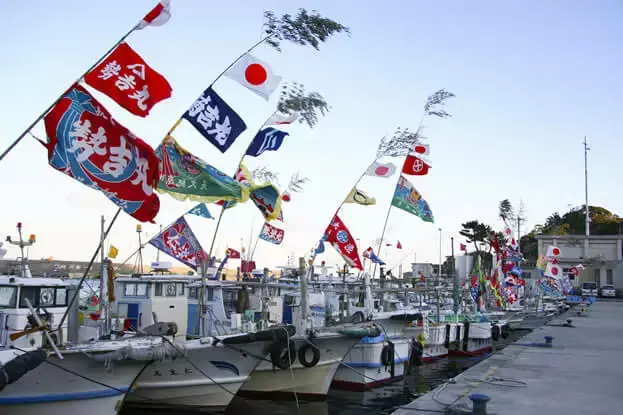
Toshijima
River Landscapes and Japan’s Strange Bridges
Miyoshi City in Tokushima Prefecture lays claim to having Japan’s strangest bridges. The still rather remote, yet beautifulIya Valley is known for its traditional kayabuki thatch roof farmhouses and for itssuspension bridges made of platted vines and strapped planks resembling something out of an Indiana Jones movie. The bridges are about 45m long, and hang 14m above the river. They are believed to have been built either to assist the saint Kobo Daishi (774–835) in crossing, or, according to another story, the bridges were built in the 12th century by defeated Heike warriors escaping the civil wars. Once the only way of crossing the river,the bridges are now tourist attractions in their own right. Around 30 bridges once spanned the rivers, however only three of these rustic bridges can still be seen and crossed.
As theIya Valley region remained mostly isolated until recent years, it had developed its own unique culture. The natural scenery of the mostly unexplored area, surrounded by lush natural forests is truly spectacular, and the views of the rickety looking bridges across the gorges and rivers remain as reminders of the old ways.
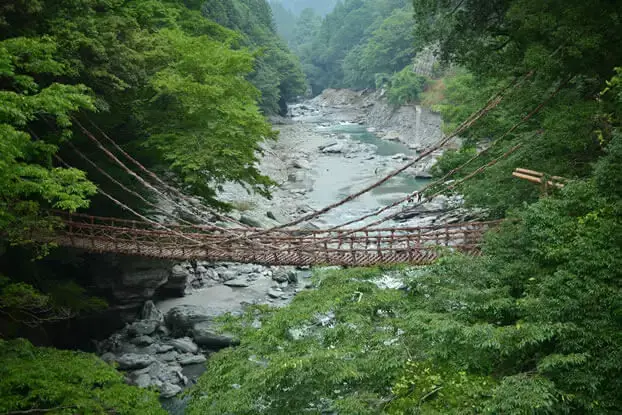
Iya Valley
As you can see, there is so much to be discovered, experienced, tasted and tried within the Kansai region. Such places aren’t always mentioned on the internet tourist sites or in the tourist brochures. Some of it takes time and effort to reach, but you’ll be rewarded with seldom seen scenes, life enriching experiences, great photographs and memories, strange stories and amazing facts.
Without a doubt, the appeal of the Kansai regions’ rural charms will have you beating a path to get off the beaten path.
Write: Chris Glenn

Chris Glenn is an Australian born bilingual radio DJ, TV presenter, narrator, MC, copywriter, author, columnist, and Japanese historian, specializing in samurai castles, battles, armor and weapons. Based in Nagoya since 1993.
He is an inbound tourism advisor for national and local governments and is often called upon as a lecturer and speaker on Japanese history and culture, media and inbound tourism topics. Having written many websites articles, pamphlets, signs and explanations for local governments, DMOs, museums, tourist sites and businesses, he has a reputation for English writing that matches the needs and senses of foreigners visiting Japan.
His books include the English language “The Battle of Sekigahara” (Booklocker) the Japanese language “Australian Researcher’s Castles of Japan” (Takarajima) and Samurai Castle Bilingual Guide (Shogakukan). Chris is dedicated to promoting and preserving Japans’ long history, deep culture, traditions, arts and crafts.
Check also...
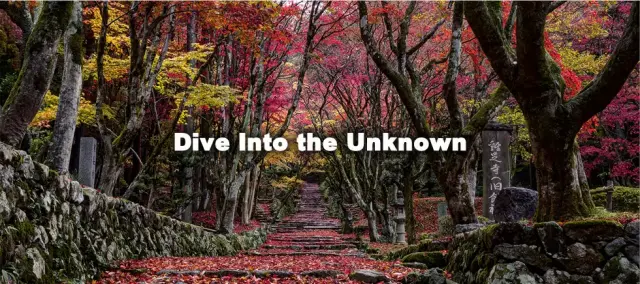
Historical Kansai, Cultural Kansai, Japan’s Treasure House
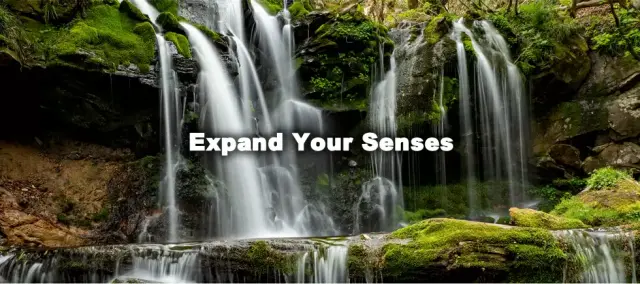
Natural Kansai, Adventures Beyond The Big Cities

Japan’s Kitchen, Must-Try Kansai Cuisine
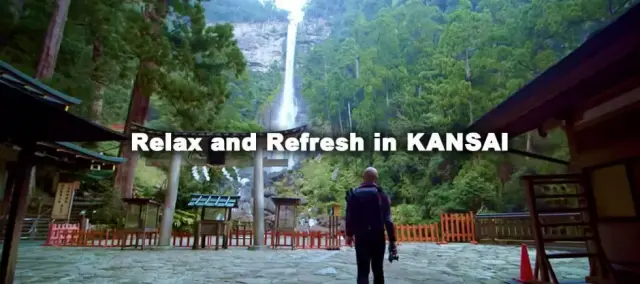
Relax and Refresh in KANSAI
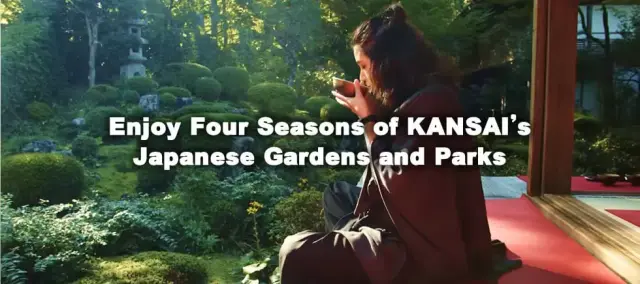
Enjoy Four Seasons of KANSAI’s Japanese Gardens and Parks
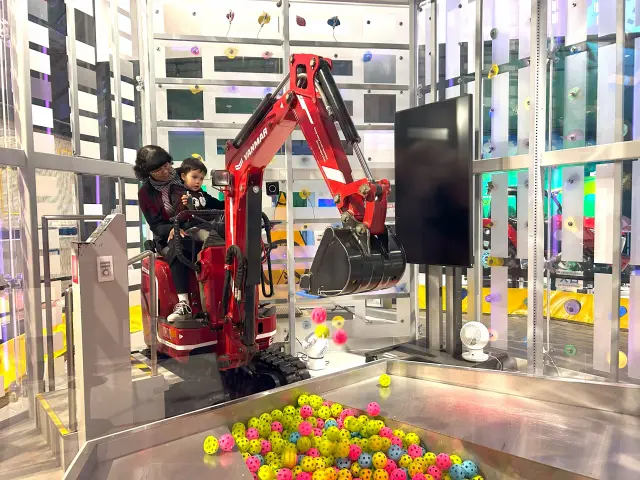
Learning and Discovering with your Family: A fun, Interactive adventure in Kansai
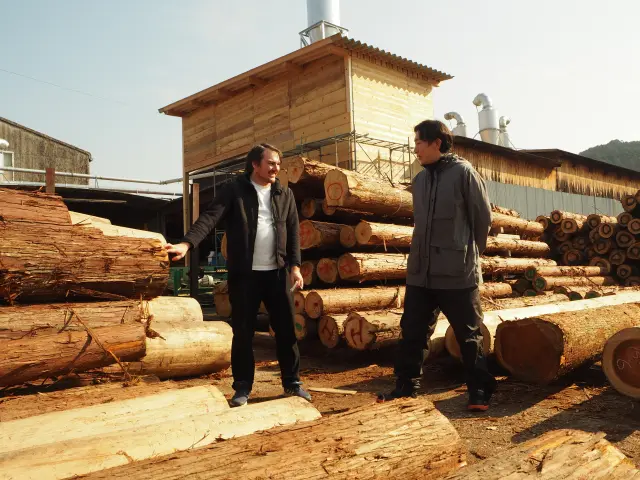
Fermentation, Forests and Waters - A Journey Into the Living Legacy of Tradition and Community in Shiga and Nara
